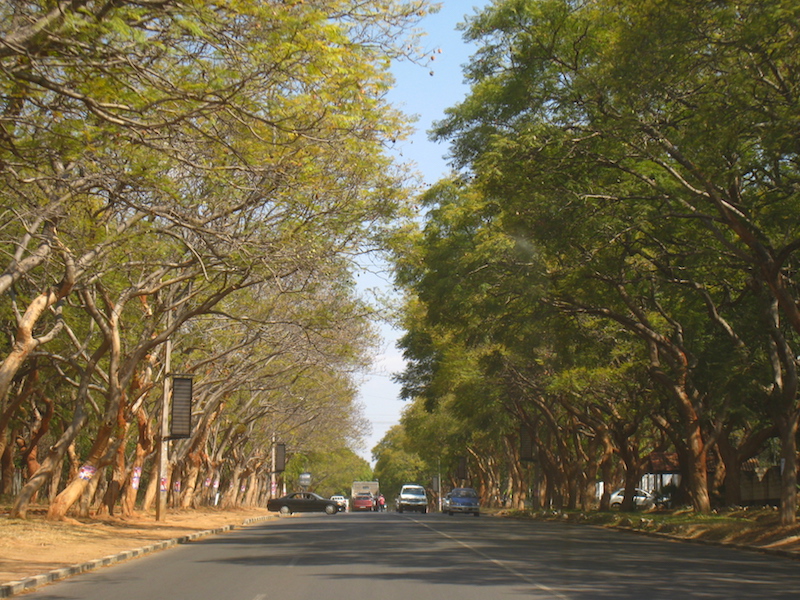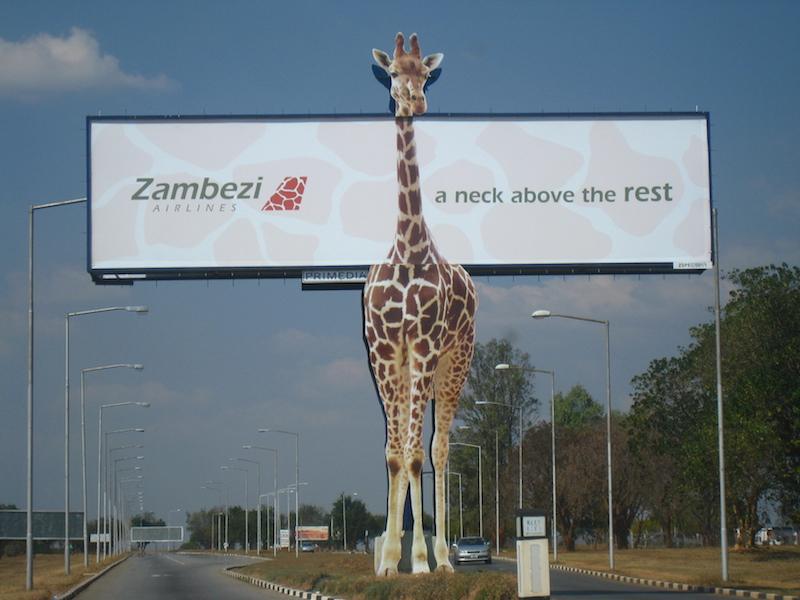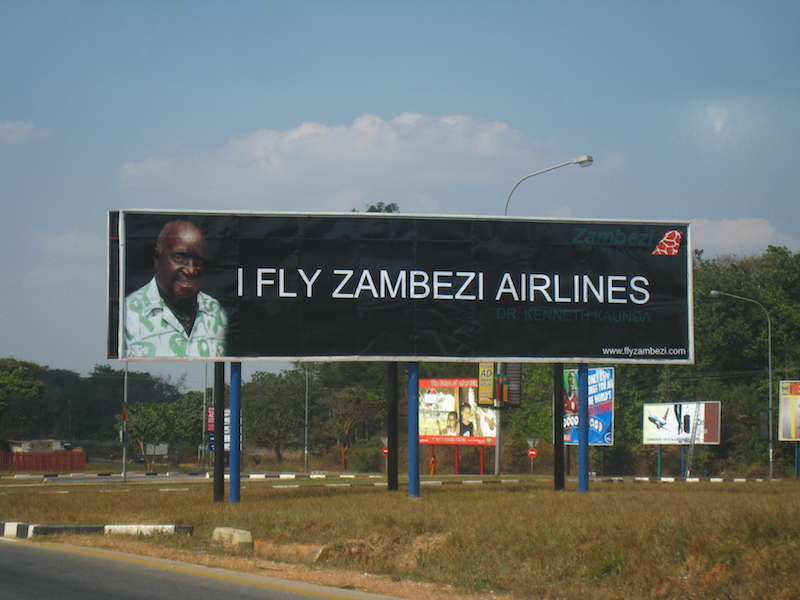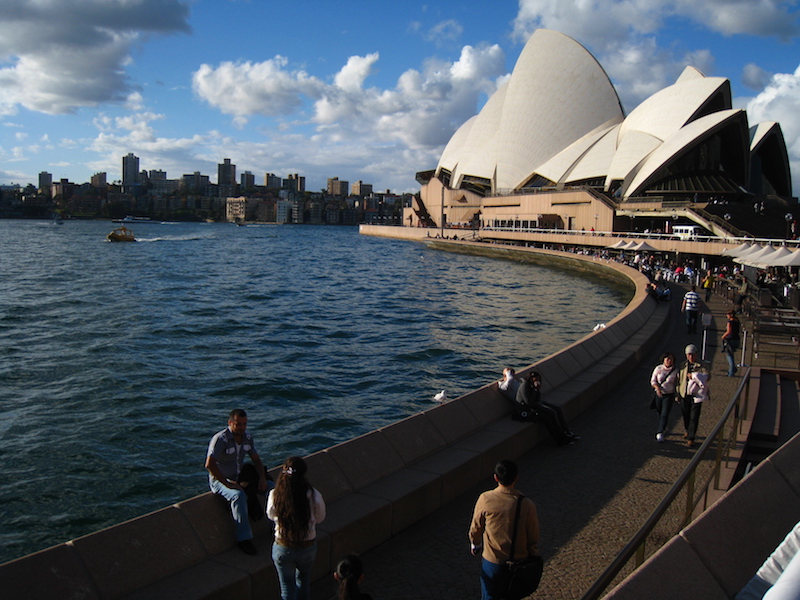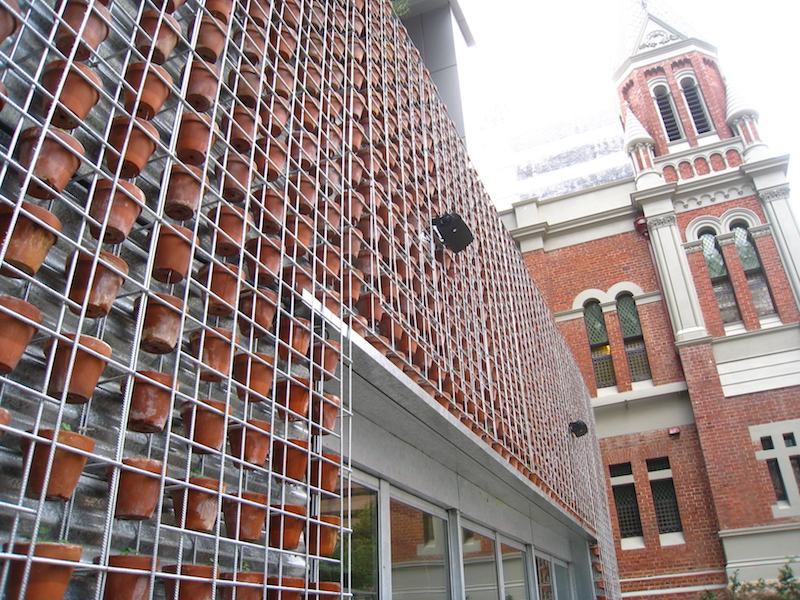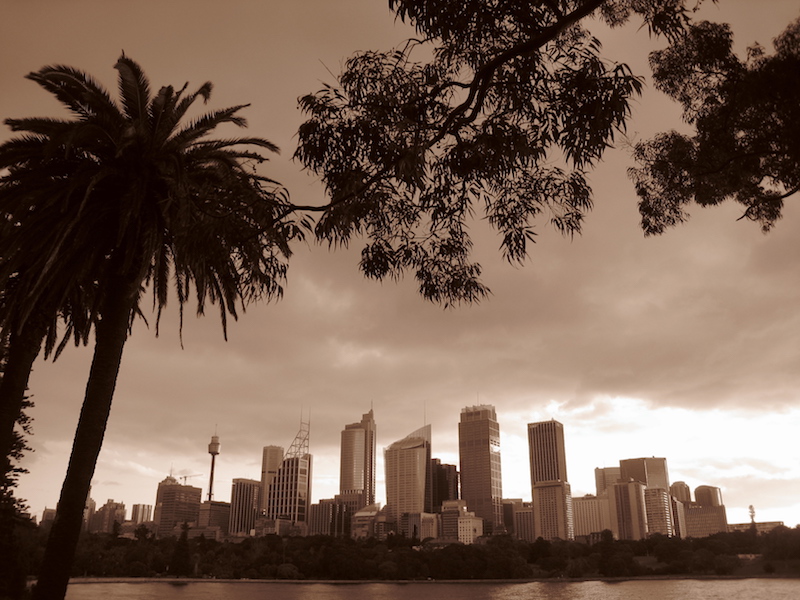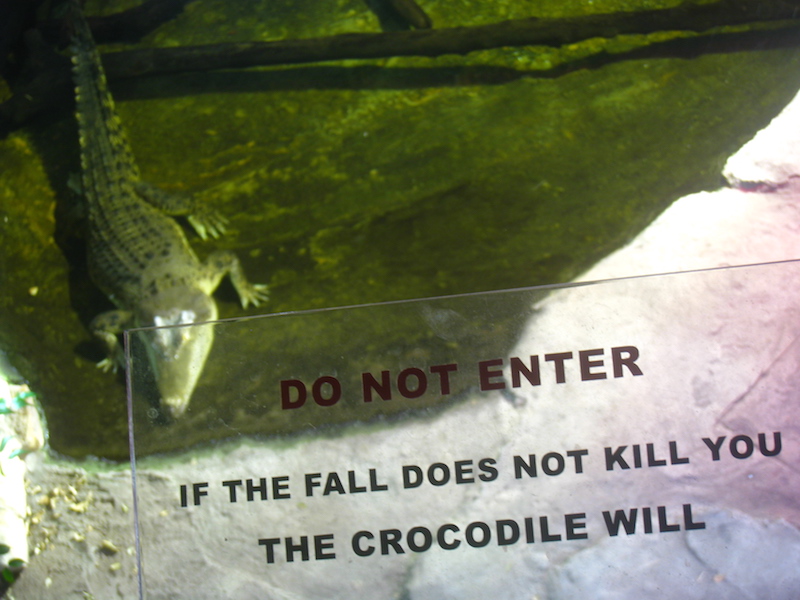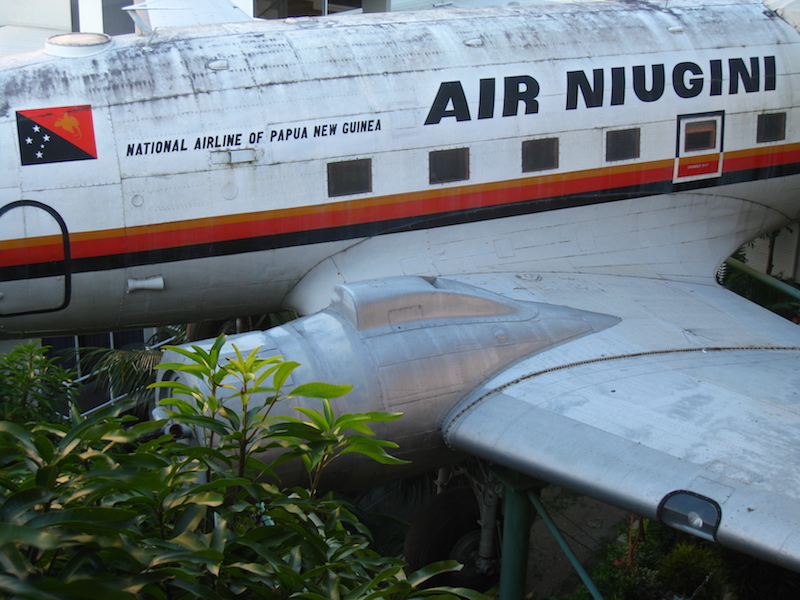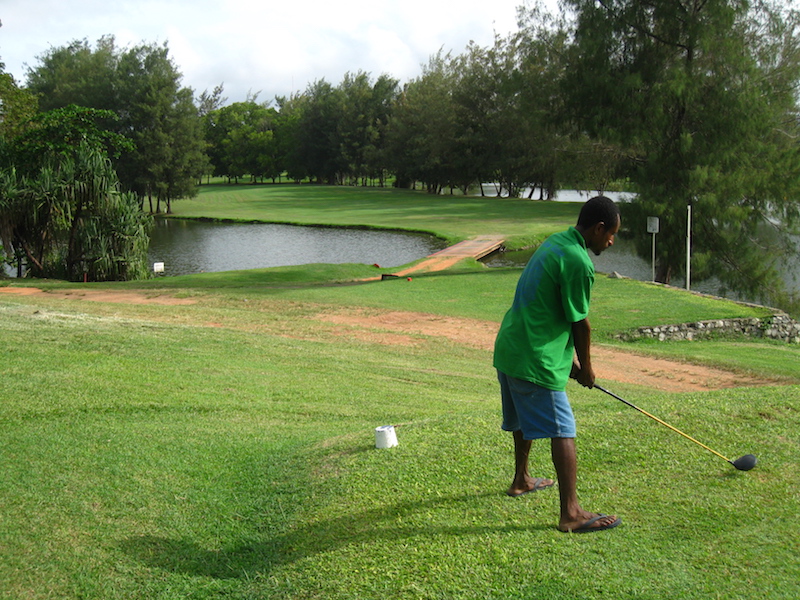Case Studies in the 9 to 5 alternative: No. 7
Welcome to a series of profiles on alternative lifestyles. If you think that you (or someone you know) would make for an interesting interview, drop me a line.
Meet Dr. Benedict G. Davies. He recently started Iconic Guides, a website that provides downloadable audio tours of world historic sites. While I tend to steer clear of endorsements for specific blogs or businesses, I’m a huge fan of Dr. Davies’ background and philosophy behind this particular idea.
I asked Dr. Davies to share his story—specifically what led him to start his own business, what choices he’s made so far and how he sees himself progressing. Dr. Davies provides us with a great case study in entrepreneurship. Read below to see how he followed his passions and “thirst for knowledge” to create Iconic Guides.
![]()
What is your background? What lead you to Iconic Guides?
I originally studied Egyptology at the University of Liverpool, receiving my PhD in 1996 with a study of the royal workmen who excavated and decorated the tombs in the Valley of the Kings. Since then I pursued a career in investment management, where I specialized in smaller UK companies. Unfortunately, due to the financial meltdown in 2008 I was made redundant from my job in London. It was at that point, with markets collapsing all around us, that I decided to take some time out to travel to the Middle East and Far East.
I came up with the idea for Iconic Guides whilst I was traveling around Japan last year. The country is home to so many fantastic Buddhist and Shinto temple/shrine sites and mountain-top retreats. However, there is very little information available once you arrive at these sites (especially the most isolated ones). I actually got a bit fed up carrying an 800-odd page Fodor’s guide book around with me every day. As a historian, I have a great thirst for knowledge and really felt that I was not getting enough out of my visits to these fascinating temples. I thought how brilliant it would be to have an audio guide playing whilst one explored the different parts of the temple – explaining the historical background/context of the site, the purpose of each room/building as well as some information on the religious iconography that abounds in Japanese temples. This would mean that one could listen to the audio commentaries without having to continually have recourse to a traditional guide book each time you wanted to look something up. What a perfect solution! Another advantage to the audio guide is that it remains yours to keep – you can listen to it before, during and after a visit to these places – something you can’t do if you’re part of a traditional tour group. Users might also like to use the commentaries to enlighten family slide shows when they return from their travels.
The aim of Iconic Guides is to provide independent travelers with insightful, accurate and up to date commentaries to these destinations. It’s also a cheaper and more flexible alternative to joining a traditional tour group or, more importantly, hiring a local guide. I think that’s an important point to make about Iconic Guides in an era of great economic austerity. People will always travel to exotic destinations, but they may now be looking to do so in a more cost-efficient manner. I’ve met so many fellow travelers who have had bad experiences with local (and expensive) tour guides. I too have had my share of poor local guides, especially ones that I hired whilst at Xi’an and the Summer Palace in Beijing. Iconic Guides give one complete freedom to explore the ancient monuments, without the constraints of being part of a larger tour party.
How did you map out the business model?
 Upon returning to the UK last summer I was still a bit skeptical about the concept of audio guides. I therefore set out initially to write guide books to the ancient monuments of both Japan and Egypt. Egypt was an obvious choice, given my academic background as well as the fact that I had just visited the country prior to arriving in Japan at the end of 2008. As I researched the material and spoke to other academics, friends and family, it was becoming apparent that the idea of audio guides to sites from the ancient world could indeed prove to be popular. I kept writing the guides to sites in Japan and Egypt, knowing that I could tailor them at a later date into a style more suitable to the spoken word of an audio guide.
Upon returning to the UK last summer I was still a bit skeptical about the concept of audio guides. I therefore set out initially to write guide books to the ancient monuments of both Japan and Egypt. Egypt was an obvious choice, given my academic background as well as the fact that I had just visited the country prior to arriving in Japan at the end of 2008. As I researched the material and spoke to other academics, friends and family, it was becoming apparent that the idea of audio guides to sites from the ancient world could indeed prove to be popular. I kept writing the guides to sites in Japan and Egypt, knowing that I could tailor them at a later date into a style more suitable to the spoken word of an audio guide.
Several months into the project I decided to abandon the written guides and solely concentrate on the audio version. By this point I had already covered the major sites of Kyoto and Nara in Japan and was making serious inroads into the Egyptian series. By now, the ambition was to try and build a unique website offering guides to sites from all the major ancient civilizations. However, I knew that this would not be possible, given time and financial constraints. In an ideal world, I would have continued to produce series after series of guides before launching the products onto the market. I decided that once I had completed the major Egyptian sites and made a start on ancient Greece, then I would be in a strong position to go live, having sufficient critical mass to try to attract a serious following.
Who designed your website?
I came up with the concept for the site as well as the graphical elements. Given the type of business, I wanted to go with an art-deco, 1930’s theme – representing the ‘Golden Age of Travel’. I just love those exotic looking travel posters advertising far flung places, which at that time must have seemed totally intoxicating to the public. I wanted to find a web designer who could also do the graphic design of the site for me. I didn’t want to take the project to a large agency so set about finding someone local to Liverpool who could take on the project for me. I was lucky to find Robb Owen, a freelancer who runs Kumori Media in Liverpool. It was an ideal choice and he offered me a very competitive rate.
How did you partner up with a professional voiceover artist?
 Initially an academic colleague and I produced a couple of test guides. However, as we were recording from home, the quality came nowhere near to that of a professional and it soon dawned on me that if the business was to be taken seriously, then I would need to find a ‘trained’ and experienced voice for the narration. I came across Della Phillips after I advertised for a professional voice-over artist on the Internet. I received over 60 auditions from VOAs around the world, which made the decision particularly difficult given the quality of many of the frontrunners. I really liked Della’s audition and think she has a great tone to her voice for this style of work. It’s also not a voice that you can tire of easily – which is key with an audio guide. The last thing one wants is to lose the attention of the user as they chart their way around the ancient sites. I also wanted to use a single VOA so as to retain continuity throughout all the series of guides.
Initially an academic colleague and I produced a couple of test guides. However, as we were recording from home, the quality came nowhere near to that of a professional and it soon dawned on me that if the business was to be taken seriously, then I would need to find a ‘trained’ and experienced voice for the narration. I came across Della Phillips after I advertised for a professional voice-over artist on the Internet. I received over 60 auditions from VOAs around the world, which made the decision particularly difficult given the quality of many of the frontrunners. I really liked Della’s audition and think she has a great tone to her voice for this style of work. It’s also not a voice that you can tire of easily – which is key with an audio guide. The last thing one wants is to lose the attention of the user as they chart their way around the ancient sites. I also wanted to use a single VOA so as to retain continuity throughout all the series of guides.
Della has shown superb professionalism throughout the entire process. She really believed in the business from the outset and consequently was kind enough to do the work on a substantially discounted basis.
What have been your biggest hurdles so far? Have you seen any short-term success?
Given my love of history, researching and writing, I was never going to be phased by the prospect of producing the scripts for the actual audio guides. I certainly feel confident enough that I can transpose these skills into other historical disciplines, without sacrificing quality along the way. One of the first hurdles that I encountered was ‘how was I going to produce the site maps and plans?’ I wanted them to have a professional look, seeing that they were a fundamental element to the product. Yet, I had absolutely no knowledge of any drawing programs. I did some research and eventually invested in a CAD program called Vectorworks. I then set about reading as many manuals, online forums posts and blogs on the subject so as to immerse myself in the technicalities of the program. After many months of study, trial and error, I am now able to produce professional looking plans both in 2D and 3D.
I’ve found that establishing the best keywords for the site in order to maximize Search Engine Optimization has been a considerable challenge and something that I am still refining even now. This is not an area in which I have any experience, but one that is essential to the future success of the site.
The website is in its infancy, being little more than a month old now. Until I am able to get more publicity for the product I am not expecting to make serious inroads into sales. However, the major hurdle is getting the concept of the audio tours more firmly embedded into the public conscience. I think right now, most people who may be considering traveling to these kinds of destinations just don’t appreciate that this type of product is out there in the marketplace. In these terms, there is a long road ahead. Ultimately, if we can educate the target market effectively enough, then I believe that IG has a good chance of a successful future.
What differentiates Iconic Guides from the oodles of other travel guides out there?
 There certainly aren’t oodles of other audio guides out there that cover ancient destinations. Yes, there are some sites that specialize in one particular area or other, or the city guides (such as Athens) that cross-over into my material. However, there is no other site quite like mine currently that offers such a range of guides purely aimed at travelers who are going to be visiting archaeological sites and ancient monuments. Furthermore, I have yet to see anything in the audio arena on Egypt. The beauty of my product is that I have a strong academic background, having studied Egyptian and Greek history at a high level. I’ve also written many academic books and articles, which gives me an edge in terms of the preparation and presentation of the material. The guides are not only hugely informative, but they are intensely researched, using the most up-to-date source academic source material.
There certainly aren’t oodles of other audio guides out there that cover ancient destinations. Yes, there are some sites that specialize in one particular area or other, or the city guides (such as Athens) that cross-over into my material. However, there is no other site quite like mine currently that offers such a range of guides purely aimed at travelers who are going to be visiting archaeological sites and ancient monuments. Furthermore, I have yet to see anything in the audio arena on Egypt. The beauty of my product is that I have a strong academic background, having studied Egyptian and Greek history at a high level. I’ve also written many academic books and articles, which gives me an edge in terms of the preparation and presentation of the material. The guides are not only hugely informative, but they are intensely researched, using the most up-to-date source academic source material.
I’m not intending to compete with traditional guide books. My guides can be used as an accompaniment to a guide book. I really want to capture the imagination of travelers who are seriously interested in visiting these places. I want these guides to enliven and enrich their visits to the ancient world. I also think that my guides could be extremely beneficial to people who are more comfortable travelling as part of a tour party. They could listen to them either before or after they’ve been on their tour of a particular site.
Any plans for the future?
The main areas of focus going forward will be to complete the major sites of Greece (e.g., Epidaurus, Delphi, Olympia, Pylos, Corinth – all of which are currently in preparation) and to move next to ancient Rome and Turkey (e.g. Ephesus, Troy and Miletos). Personally I am working on a series of Aztec and Maya sites in Mesoamerica (Teotihuacan, Palenque, Chichen Itza and the Templo Mayor in Mexico City, to name but a few). I have begun to enlist the support of academics from other fields in writing future guides. The aim is for them to provide a written script. I will then produce that as audio in additional to drawing the required plans and maps. The guide will then be marketed on IG and any net revenues split equally between the business and the contributor. It’s certainly the best way to built the scale of the site, especially seeing that I am spending more time and energy on promotion. As I mentioned earlier, the ambition to turn IG into an ancient world audio guide library par excellence, a first port of call for all travelers when they begin to plan for a new adventure.
As I said earlier, my main target audience is really the informed and independent traveler. However, I would love to be able to do a licensing deal with one of the major Nile cruise tour operators for example. I do believe that the detailed information contained in my guides could prove to be an extremely useful adjunct to their own local tour guides on the ground.
Many people ask me whether I have developed an Apple App for the guides. I would love to move down this road, but my priorities now are to promote the product/website in order to generate a reasonable income, which can then be used for future initiatives such as an ‘App’ or a GPS-enabled audio guide.
Check out Iconic Guides. What do you think? Is this something you might use?
